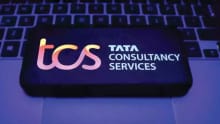An Apple-Orange Paradox? Reinventing the Performance Management System

We hope the data will provide some radical insights into how to develop a more human-centric system that will help us reinvent the process”. A senior HR leader was echoing her team’s sentiments to evolve a Performance Management System (PMS) that aligns itself with the growth ambitions of the company.
Many companies today are willing to embark on a challenging journey of transforming their PMS with a hope to find one that will work for them now and in the future. But, the fundamental questions continue to haunt this process. Should the new system get rid of the bell curve? Should the evaluative component be de-linked from the developmental process? Does the company have an appetite to implement a revolutionary process? Can we learn from other organizations, which are further along in this evolution?
As far as learnings are concerned, they do not have to look any further. In a span of two decades, General Electric, known to be a pioneer for many Human Resource processes, made the ‘bell curve’ the mainstay of HR function for hundreds of companies across industries and geographies.
Interestingly, in 2005, few years after Jack Welch stepped down as the CEO, the company silently started backing down from the ‘bell curve’ phenomenon that they themselves had actively promoted. The rationale was that the forced ranking system undermined collaboration and stifled creativity — the two critical competencies required in the techno-savvy, new age economy.
Many companies followed suit. Microsoft got rid of the ‘stack and rank’ approach in favor of a system that relied on continuous feedback with coaching and mentoring. Netflix no longer evaluates employees against annual objectives that were set in the beginning of the year. Their new system is more fluid and dynamic. Google has adopted an ‘airline ticket pricing’ model for its top performers wherein, a high potential employee can get up to 400 percent more pay than someone in the same role and similar pay-grade. In the consulting services domain, the experience of PwC and Deloitte is slightly different. They experimented with getting away from the bell curve, but realized that a significant proportion of employees worked better with the earlier system. Instead of reverting to the old ways, they found a middle ground to get the benefits of both.
As more and more evidence gets accumulated, ironically, the landscape gets murkier. On the debate of whether to have or not to have the bell curve, the pendulum swings from left to right depending on the culture, the context and top leadership thinking at a given point in time. If this is the case, then how to determine what is right for the organization and how to get there?
The answer to this conundrum may lie somewhere else. It is possible that companies are not looking in the right place to fix the problem. Often times, metaphorically speaking, organizations are focusing on ‘apples’ while hoping for ‘oranges’. Let me explain with concrete examples. While a senior business leader of a Fortune 50 company acknowledged that in their B2B market, building long-term relationship with the distributors is extremely important, a typical PMS process rewards meeting sales targets quarter after quarter but does not reward for building relationships. The stretch goals set in the KPIs encourage behaviors of circumventing SOPs and cutting corners to achieve the numbers; compromising the goal of building long-term relationships with the customers. Take another instance. Organizations are hoping for collaborative behavior but the rewards and recognition are almost always geared towards supporting competition – ‘I am better than others’ or ‘my department is adding more value compared to any other’ type of behaviors. There are many more examples within the PMS framework. The goal-setting exercise is so driven by the outputs, that though organizations value effort and initiative, the rewards are always skewed towards the former.
Further, on one hand, leadership talks about developing a culture of experimentation and trial-and-error with a hope to instill innovation, on the other, the PMS feedback usually focuses on reprimanding for failures – the basic ingredient required to encourage creativity! These and many examples demonstrate, while management is hoping for one thing, the structures are designed to reward something else. This is the quintessential apple-orange paradox written about, by Prof. Steven Kerr in 1975, in a path-breaking paper titled ‘On the folly of rewarding A while hoping for B’. The negative consequences of such a fallacy are immense and fairly widespread. We are bringing up children who are rewarded for high grades while discounting the value of hard work. In the domain of health management, hospitals are rewarded for reducing patient stay; however, as a consequence, very sick patients are sent home when they are not ready, risking repeat illnesses and in some cases, even death. In the BPO and call center world, employees are rewarded for quantity of customers acquired and time efficiency, while the quality of service suffers dramatically. The list is endless.
Coming back to reinventing the PMS, now the question becomes, how can the organization start looking in the right place so as to reward ‘A’ while hoping for ‘A’ (and not ‘B’)? Here are some suggestions:
- Through interviews and focused groups, identify the motivations of different employee groups – millennials, women, Gen X and Gen Y.
- As a next step, identify those behaviors that the organization would like employees to demonstrate. The intersection of motivations and expectations would provide useful inputs for the re-design.
- Making ‘Rewarding A while Hoping for A’ as the guiding mantra, organizations can adopt an outside-in approach to understand perspectives from different stakeholders.
- The success of a reinvented PMS will primarily depend on the culture that debunks the apple-orange paradox. Through training and leadership development initiatives, steps should be taken to develop a new language of thinking, feeling and doing, that aligns the structure to expected behaviors.
If the process of reinvention is looked at from this objective of reducing the disparity between what is rewarded and what is hoped for, then a new PMS is likely to emerge that fits the organization like a well-fitted, customized clothing. Such a fit ensures flexibility in the process with the overall well-being of the company and the employee at the heart of its existence. When that happens, whether the contours of the organization should fit a bell-curve or a Pareto-curve becomes a theoretical exercise not worth pursuing.











